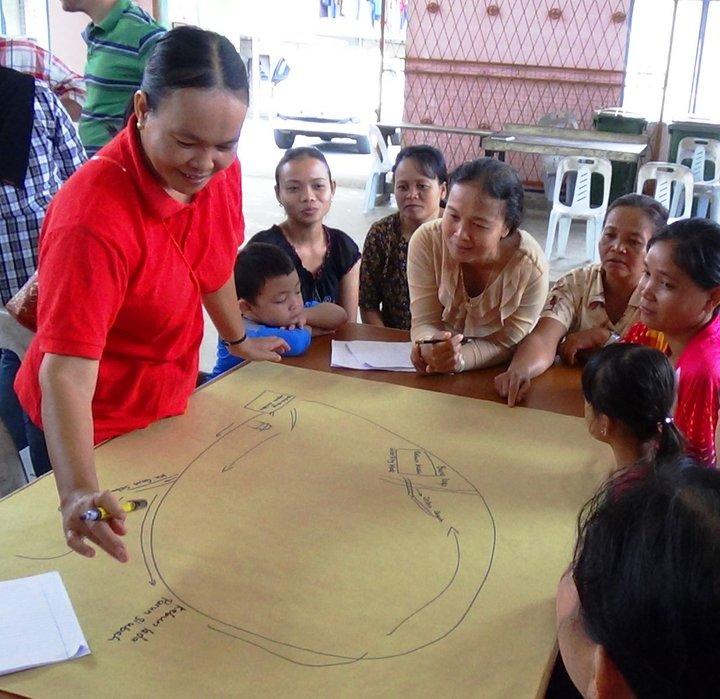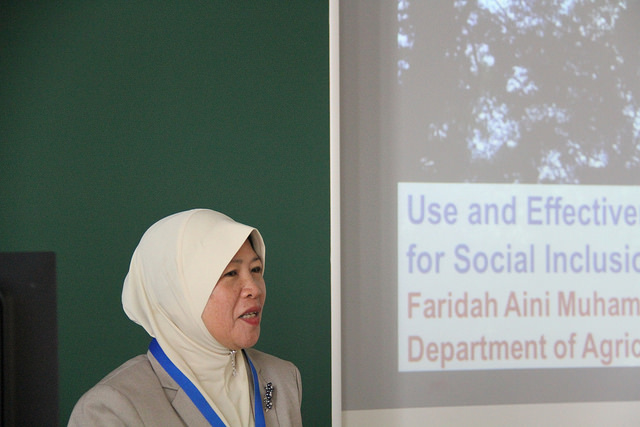Why a gender approach is important for conservation: a case study in Sarawak, Malaysia

Every year on October 15th, the UN celebrates International Day of Rural Women to honor and recognize the importance of rural women in enhancing agricultural rural development worldwide. The following story highlights the importance of integrating female and male knowledge in the conservation and management of native fruit trees in Malaysia.
Every year on October 15th, the UN celebrates International Day of Rural Women to honor and recognize the importance of rural women in enhancing agricultural rural development worldwide. The following story highlights the importance of integrating female and male knowledge in the conservation and management of native fruit trees in Malaysia.
Both men and women play a key role in the management and conservation of native fruit trees. They are both custodians, managers and users of native fruit trees and often develop distinct sets of knowledge based on their different interactions with these species. Even though both genders interact with native fruit trees in various ways, rural men are usually those invited to participate in research-for-development activities. This is partly due to their greater traditional role in public affairs, their higher levels of formal education, and their stronger control, in some contexts, over the commercialization of fruit tree products.
A study conducted by researchers from Bioversity International in collaboration with the Departments of Agriculture of Malaysia and Sarawak demonstrated the value of using a gender-responsive participatory approach to reveal gender differences in knowledge and skills related to native fruit trees in Sarawak, Malaysia. The study used participatory tools to explore differences in knowledge not only between men and women, but also between different age groups. The specific focus was on mango (Mangifera spp.) and rambutan species (Nephelium spp.).  The four participatory research tools used were: Four Cell Analysis, Venn Diagrams, Participatory Value Chain Mapping, and Participatory Rapid Market Appraisal—although many others can be of use for exploring gendered local ecological or market knowledge. Each tool offered interesting insights into how knowledge of native fruit trees varies by gender and age. Elder men could name many varieties of native fruit trees since they spend time in forests and orchards, whereas elder women got to know these varieties through their fruit processing activities. Younger men and women, however, could not identify many varieties since they have fewer interactions with native fruit trees and products; especially as young men from the study villages tend to work in urban areas.
The four participatory research tools used were: Four Cell Analysis, Venn Diagrams, Participatory Value Chain Mapping, and Participatory Rapid Market Appraisal—although many others can be of use for exploring gendered local ecological or market knowledge. Each tool offered interesting insights into how knowledge of native fruit trees varies by gender and age. Elder men could name many varieties of native fruit trees since they spend time in forests and orchards, whereas elder women got to know these varieties through their fruit processing activities. Younger men and women, however, could not identify many varieties since they have fewer interactions with native fruit trees and products; especially as young men from the study villages tend to work in urban areas.
The participatory research process allowed men and women from different generations to interact, learn from each other and share knowledge, creating new opportunities to work together towards fruit tree conservation for their community’s development. This knowledge sharing was an opportunity for men and women to support each others' businesses and interests with mangoes, and to learn more about how they each contribute differently to the conservation of native fruit trees.
The study shows the importance of understanding the roles and expertise of both men and women, with attention to how those roles vary across generational groups, to guide future actions and strategies for the sustainable management and conservation of native fruit trees or other species.
Importantly, participation in the research process increased women’s self-confidence and their knowledge about marketing native fruit trees, paving the way for socially equitable and sustainable fruit tree management opportunities.
Learn more: Evaluating the Usefulness and Ease of Use of Participatory Research Tools for Sustainable Forest Management and Livelihoods in Sarawak, Malaysia
This blog has been written by Alexandra del Castello, Intern at the Development Impact Unit, based on the study 'Evaluating the Usefulness and Ease of Use of Participatory Research Tools for Sustainable Forest Management and Livelihoods in Sarawak, Malaysia' by Faridah AM, Elias M., Lamers H, Omar S, Brooke P., and Hussin MH. Bioversity International’s forest research contributes to the CGIAR Research Program on Forests, Trees and Agroforestry: Livelihoods, Landscapes and Governance.
Photo credit: Young women take part in a participatory resource mapping exercise led by Hafizl Husin, Department of Agriculture, Malaysia. Credit: Faridah Aini Muhammad
